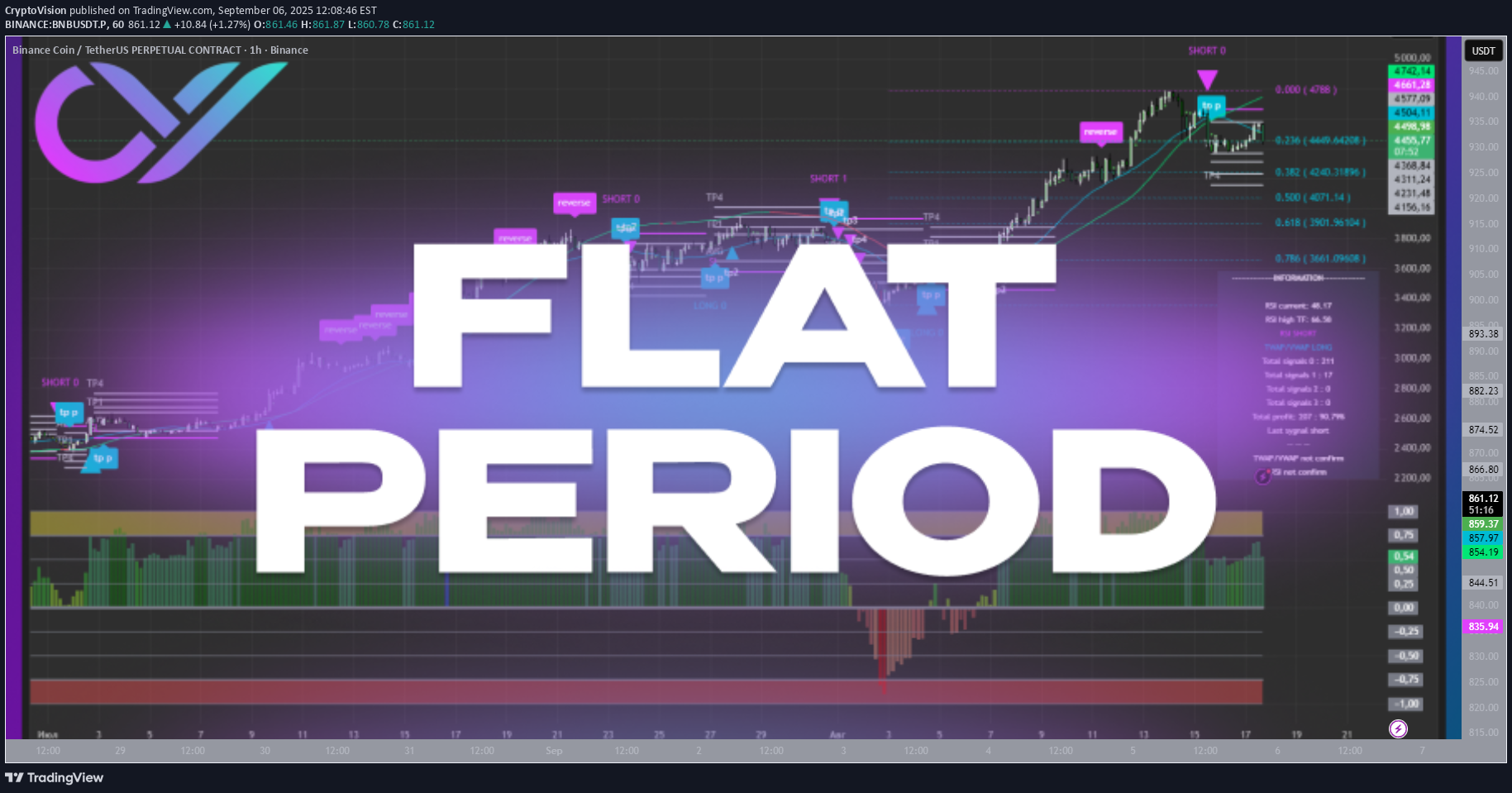Technical analysis by CryptoVision about Symbol BNB on 9/6/2025

CryptoVision

The market isn’t always driven by dynamic, trending moves. There are periods when price seems to “freeze” between levels, moving up and down but without a clear direction. This condition is called a range-bound market, or flat (sideways movement). Such phases often become a real test for traders because trend-following strategies stop working, and chaotic trades frequently lead to losses. What Is a Range-Bound Market A range-bound market is a section of the chart where price oscillates within a narrow channel, repeatedly testing support and resistance levels without a decisive breakout. In such phases, the market is essentially “resting” after a strong move, consolidating energy and preparing for the next impulse. From a market psychology perspective, flat conditions represent a balance between buyers and sellers. Some participants wait for a favorable entry point, while others lock in profits or reduce exposure. As a result, price fluctuates within a corridor until an imbalance of forces triggers a breakout. Why Flat Conditions Are Risky At first glance, sideways movement may seem safe: price isn’t crashing or soaring dramatically. But this is exactly where the danger lies for traders. - False breakouts: Price often moves beyond the range briefly, creating the illusion of a new trend, only to snap back. Traders who rushed in usually end up with losses. - Increased transaction costs: Frequent entries and exits within a range lead to numerous small trades, and commissions eat into potential profits. - Emotional burnout: A prolonged sideways market makes it hard to stay focused. Mistakes stem from fatigue and the urge to “make something happen.” That’s why many traders consider a range-bound market the worst state: it offers little directional movement but creates plenty of opportunities to overtrade and lose. How to Trade During Flat Conditions The most common mistake is trying to trade a flat market the same way as a trending one. Instead, a different playbook applies here. - Define the range boundaries: Support and resistance levels become critical. Mark them clearly and pay attention to repeated touches. - Trade from the edges: It’s usually better to enter near support (buy) or resistance (sell) rather than in the middle of the range. - Take profits quickly: Don’t expect large moves. Targets in range trading are much smaller than in trending conditions. - Reduce trade frequency: Avoid reacting to every small price swing. Wait for confirmations at levels and act selectively. - Watch the volume: Breakouts are often accompanied by a volume spike. That can be the first signal of a directional move ahead. When to Expect a Breakout Every range eventually ends. The question is when and in which direction. To avoid guessing, look for signs of preparation: - Price starts compressing within the range, forming a triangle pattern. - Trading volume decreases, followed by a sudden surge. - Support or resistance levels get tested more frequently. A breakout confirmed by price consolidation above resistance or below support usually marks the start of a new trend. These moments often create the best entry opportunities. Why a Systematic Approach Matters Most Most traders lose money in sideways markets not because they lack knowledge, but because they give in to emotions. The urge to chase every move, fear of missing “the breakout,” or frustration from inactivity turn trading into random gambling. A systematic approach changes the picture. When a trader has a clear algorithm—how to spot ranges, which levels to mark, where to take profits, and when to wait for a breakout—the market becomes structured, not chaotic. Discipline is even more important in flat conditions than in trends, because this is where the foundation for the next strong move is laid. The Practical Value of Automation Flat phases are where automation tools are especially helpful. Algorithms that highlight levels, suggest take-profit zones, and manage risk allow traders to avoid guesswork and emotional mistakes. - For beginners, this serves as a navigation tool: they learn to recognize market structure and understand when to act and when to stay out. - For experienced traders, automation supports discipline, speeds up analysis, and reduces emotional bias. Conclusion A range-bound market isn’t the enemy of traders—it’s a natural state of the market. It may be exhausting with its unpredictability and tempting false moves, but these periods build the energy for future trends. Traders who can identify flat conditions and follow a structured system not only protect their capital but also position themselves for strong moves that always follow consolidation. The market will always test traders’ nerves. But with discipline, technical analysis, and automation, even the chaos of a sideways phase becomes a controlled process. And that’s what separates random luck from consistent results.